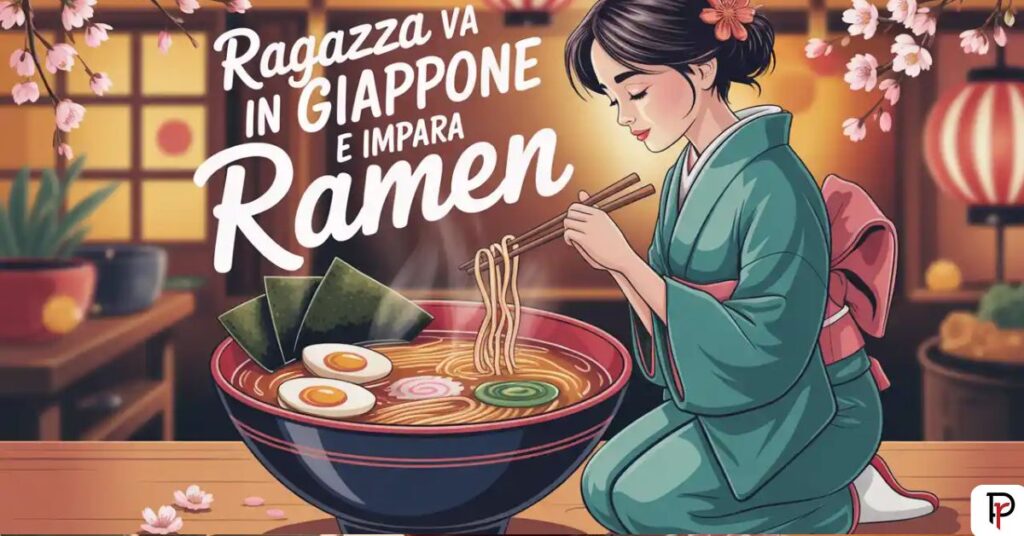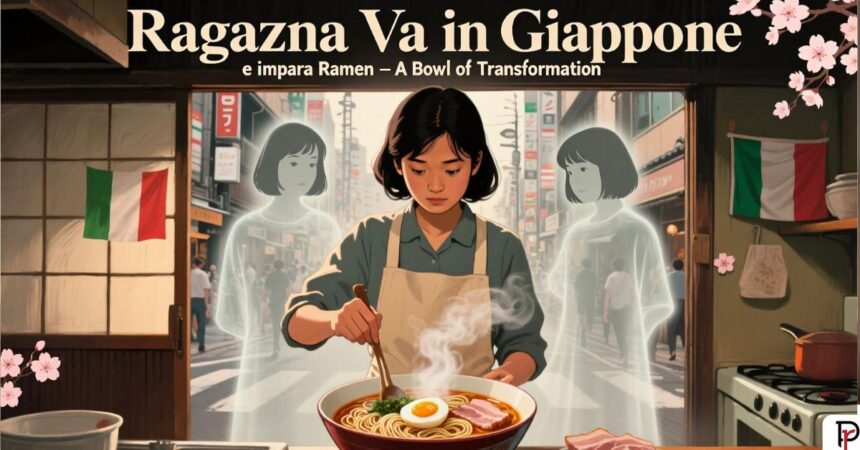The beauty of cinema lies in its ability to transport us to unfamiliar places and expose us to new cultures while offering stories of personal growth and transformation. The film ragazza va in Giappone e impara ramen, better known as “The Ramen Girl,” is a heartwarming tale that does just that. Released in 2008, it follows the story of Abby, an American woman who travels to Japan to be with her boyfriend, only to find herself lost and seeking a new sense of purpose. She discovers her calling in an unexpected place—through the art and discipline of ramen-making.
This blog takes a detailed look at the movie, uncovering its plot, overarching themes, and cultural significance. It also explores how the universal language of food becomes a bridge between cultures and personal growth.
What is the Film Ragazza Va in Giappone e Impara Ramen About?
The Ramen Girl is a cross-cultural drama with light-hearted comedic elements. The story begins with Abby, a restless young woman who relocates to Tokyo to join her boyfriend. Upon arriving, she quickly finds herself stranded and broken-hearted after her boyfriend abruptly leaves her. Alone in a foreign city where she doesn’t speak the language, Abby struggles to carve out her path.
Her life takes a fateful turn when she stumbles upon a small ramen shop. Intrigued by the meticulously prepared bowls of ramen and the passion of its gruff but dedicated chef, she decides to apprentice under him. Despite the initial cultural and language barriers, Abby becomes determined to master the art of crafting the perfect bowl of ramen—a pursuit that demands discipline, humility, and a willingness to persevere through challenges.
What makes this film stand out is not simply the storyline but the way it immerses viewers into the world of traditional ramen-making, complementing its emotional, universal theme of self-discovery.

Key Themes Explored in the Film
1. Cultural Exchange and Understanding
At its core, the film explores the bridging of two vastly different worlds. Abby, a free-spirited and somewhat impulsive foreigner, collides with the rigid traditions of Japanese ramen-making. Her relationship with her ramen master is both challenging and rewarding as they learn to communicate, not with words but through their shared dedication to the craft.
2. Personal Growth Through Adversity
Abby’s personal growth reflects the idea that struggle often precedes transformation. Initially lost and without direction, she discovers her inner strength and purpose by committing herself to something larger than her own woes—creating something that brings joy and comfort to others.
3. Food as a Universal Language
Ramen becomes a metaphor not just for nourishment but also for connection. Despite differences in culture and language, food becomes the ultimate equalizer, showcasing its power to convey care, love, and shared experiences across borders.
ALSO READ THIS POST: Evil in Film and Literature Polesny – Unpacking the Complexities of Evil
Detailed Plot Exploration
Act 1: The Beginning of Abby’s Journey
The film opens with Abby arriving in Tokyo full of hope, only to find her relationship ending before it even begins. Her sense of isolation is palpable; she is a foreigner adrift in an unfamiliar city. Her discovery of the ramen shop is serendipitous, offering her a small moment of comfort in troubled times.
Act 2: The Struggles of Apprenticeship
Her decision to apprentice under the ramen chef marks the start of a grueling yet enlightening experience. The chef, portrayed as a tough and no-nonsense mentor, subjects Abby to rigorous training. She faces both physical and emotional hurdles, from learning the intricate techniques of ramen-making to grappling with her insecurities.
Act 3: Finding Meaning in Ramen
Abby’s persistence pays off as she begins to grasp not only the mechanics of making ramen but also the soul behind it. Through her dedication, she crafts ramen bowls that reflect her own emotions and newfound understanding of life. By infusing her personality into her work, she creates a dish that bridges the gap between the East and the West.
Act 4: A Triumph of Spirit
The story reaches its emotional climax as Abby earns the respect of her master and the patrons of the ramen shop. She realizes that her true achievement lies in discovering her path and the sense of fulfillment it brings, far beyond her initial reason for traveling to Japan.
The Art of Ramen in the Film
Ramen, in this film, is far more than a dish—it’s a character in its own right. It symbolizes patience, precision, and passion. The intricate process of creating ramen, from kneading the dough for noodles to simmering the broth for hours, serves as a metaphor for life. Just like ramen requires the perfect balance of ingredients, life demands balance, discipline, and harmony.
| Aspect of Ramen | Symbolism in the Film |
| Broth | Represents depth and foundation, just as Abby builds a strong inner core |
| Noodles | Signify structure and discipline, the backbone of her transformation |
| Toppings | Add personal flair, reflecting individuality and cultural identity |
Cultural Insights Offered by the Film
The film provides rich cultural insights into Japanese traditions. Ramen-making is presented not as mere cooking but as an art form, requiring reverence and dedication. Through Abby’s experiences, viewers also gain a glimpse of Japanese work ethic, communication styles, and the importance of respecting elders and mentors.
This cultural authenticity, blended with universal themes of growth and connection, makes the film resonate with audiences across the globe.
FAQs
How accurate is the depiction of ramen-making in the film?
While certain elements are dramatized for storytelling purposes, the techniques and philosophy showcased align closely with real Japanese culinary traditions.
Where was the film shot?
The primary filming location was Tokyo, Japan, which helps capture the authentic atmosphere of a bustling Japanese city.
Does the film appeal to non-food lovers?
Absolutely. While ramen plays an integral role, the story focuses on universal themes like self-discovery, resilience, and cultural connection.
Are there similar films that explore culinary arts?
Other films like Chef, Julie & Julia, and Eat Drink Man Woman also celebrate the emotional and cultural significance of food.
Can viewers without knowledge of Japanese culture enjoy the film?
Yes, the universal themes and relatable character arc make it accessible to audiences from all backgrounds.
Final Thoughts
The film ragazza va in Giappone e impara ramen, or The Ramen Girl, is more than just a culinary tale; it’s a story of finding purpose in unexpected places. Through the lens of food and cultural exchange, it shows us that life’s greatest transformations often come from the challenges we least expect. If you’re a fan of heartfelt stories with a dash of cultural immersion, this film is a must-watch.
